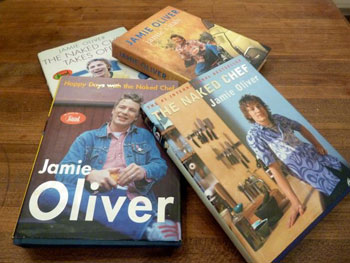 If you have as many chef crushes as I do, here’s some good news: you don’t have to break up with your favorite chefs in order to lose weight, you just have to redefine your relationships…
If you have as many chef crushes as I do, here’s some good news: you don’t have to break up with your favorite chefs in order to lose weight, you just have to redefine your relationships…
And here’s a Jamie Oliver “recipe re-do” to prove the point: Skinny Steak with Mushrooms, Bok Choy and Gingered Tamari Sauce.
From the moment Jamie burst on the scene–with dishes that were both simple and sophisticated, and a style of cooking that was casual and fun–I was a fan; never questioning his recipes, I just cooked. But now, 30+ pounds lighter and with an eye on the health of everyone in my family, I do question the ingredients and instructions for every recipe I make and, though I still adore Jamie and his dishes, I happily alter them.
Found in Happy Days with the Naked Chef, the original version of this quick and easy recipe calls for one 8-ounce sirloin steak per person. Without getting into the other health risks of eating too much red meat, it’s just an awful lot of fat and calories…32 grams of fat, to be exact, and roughly 500 calories–about a third of the calories I need in an entire day… And I’m not talking about the fat and calories in the whole meal, just the portion of the plate that’s protein!
By reducing that super-sized portion of beef and using meat-mimicking magic mushrooms to fill out the plate you can still enjoy the taste and sensation of a beef dinner but with half the fat, cholesterol and calories.

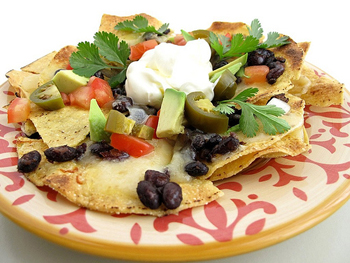 Among all the international foods enjoyed in this country, Mexican food is one of the most popular. It's hard not to love Mexican food: the spiciness, complex and earthy flavors, and multiple textures. It's truly soul-satisfying comfort food. And why shouldn't we like the food of our neighbors? Though we don't always behave so neighborly. With all that's happening right now with Arizona's proposed new immigration law, we can't forget that immigrants built this nation and Mexican-Americans have contributed much to this country.
Among all the international foods enjoyed in this country, Mexican food is one of the most popular. It's hard not to love Mexican food: the spiciness, complex and earthy flavors, and multiple textures. It's truly soul-satisfying comfort food. And why shouldn't we like the food of our neighbors? Though we don't always behave so neighborly. With all that's happening right now with Arizona's proposed new immigration law, we can't forget that immigrants built this nation and Mexican-Americans have contributed much to this country.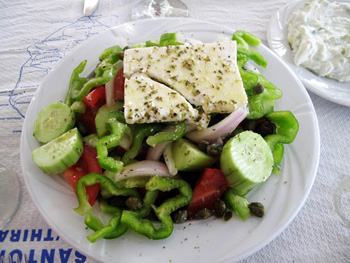 The most traditional Greek salad recipe, and the kind of Greek salad you will usually encounter in Greece, does not typically include lettuce, but is more a bowl of raw chunky vegetables with a little olive oil and lemon juice.
The most traditional Greek salad recipe, and the kind of Greek salad you will usually encounter in Greece, does not typically include lettuce, but is more a bowl of raw chunky vegetables with a little olive oil and lemon juice.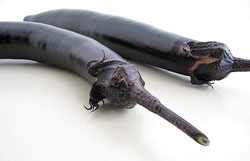 Eggplants are some of the most unique and interesting vegetables. Many of us in the States are only familiar with the large and bulbous globe variety. But there are many more to be found elsewhere in the world. Eggplants, also called aubergines, are native to Asia with many different varieties found throughout the continent. Asian eggplants come in many different shapes, colors, and sizes. Some berries—as they are botanically referred to—are thin and long, others short and spherical. Colors range from white and green to purple and almost black with some even striped. A thinner skin and milder flesh make the Asian varieties much more prized than the oftentimes bitter globe.
Eggplants are some of the most unique and interesting vegetables. Many of us in the States are only familiar with the large and bulbous globe variety. But there are many more to be found elsewhere in the world. Eggplants, also called aubergines, are native to Asia with many different varieties found throughout the continent. Asian eggplants come in many different shapes, colors, and sizes. Some berries—as they are botanically referred to—are thin and long, others short and spherical. Colors range from white and green to purple and almost black with some even striped. A thinner skin and milder flesh make the Asian varieties much more prized than the oftentimes bitter globe.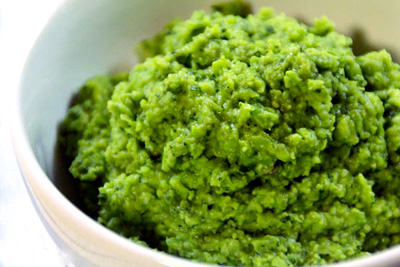 Mushy peas are a traditional side dish to the British classic - Fish & Chips. I was recently in London for the Queen’s Jubilee and stayed at the incredibly beautiful Corinthia Hotel.
Mushy peas are a traditional side dish to the British classic - Fish & Chips. I was recently in London for the Queen’s Jubilee and stayed at the incredibly beautiful Corinthia Hotel.